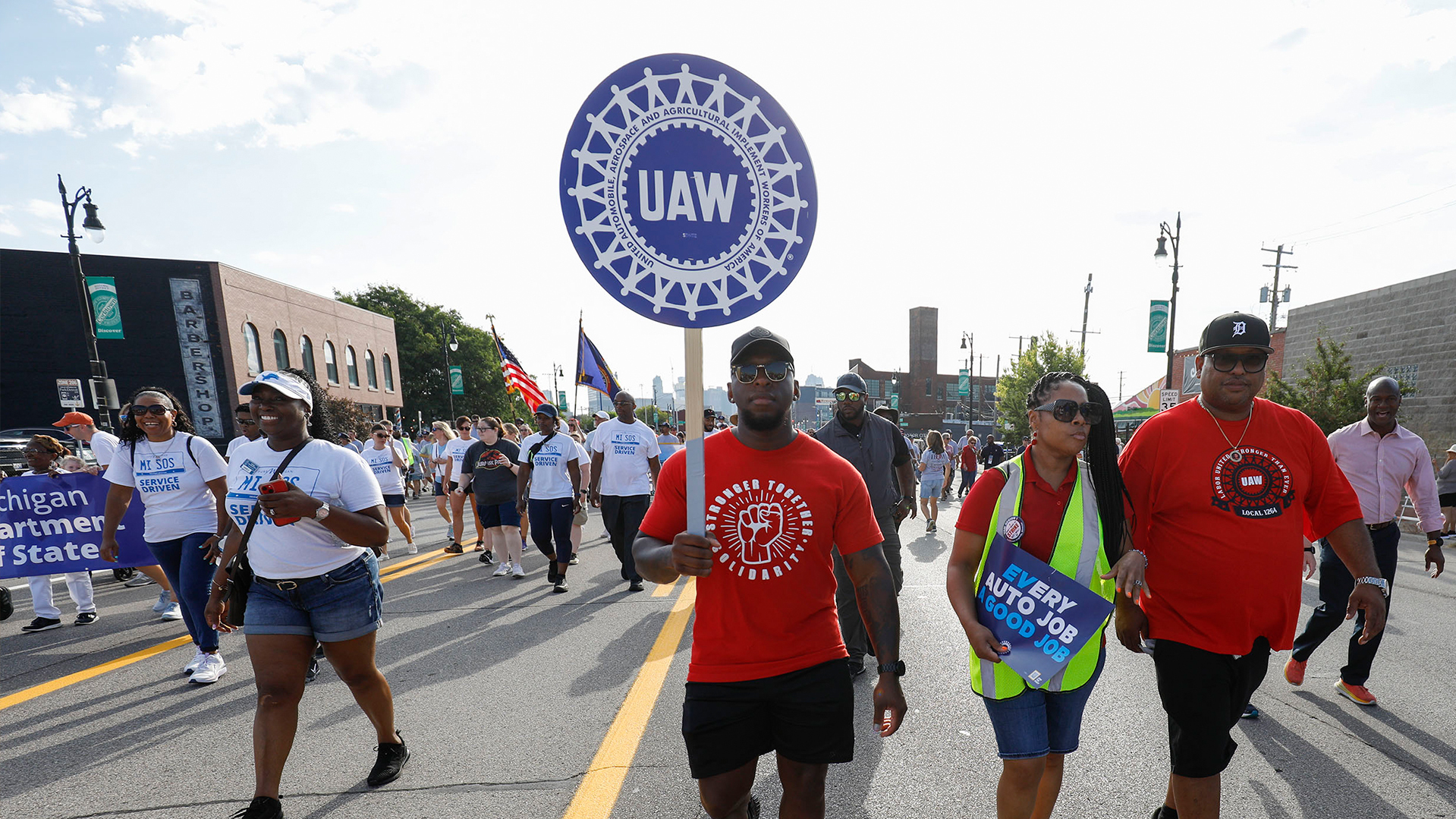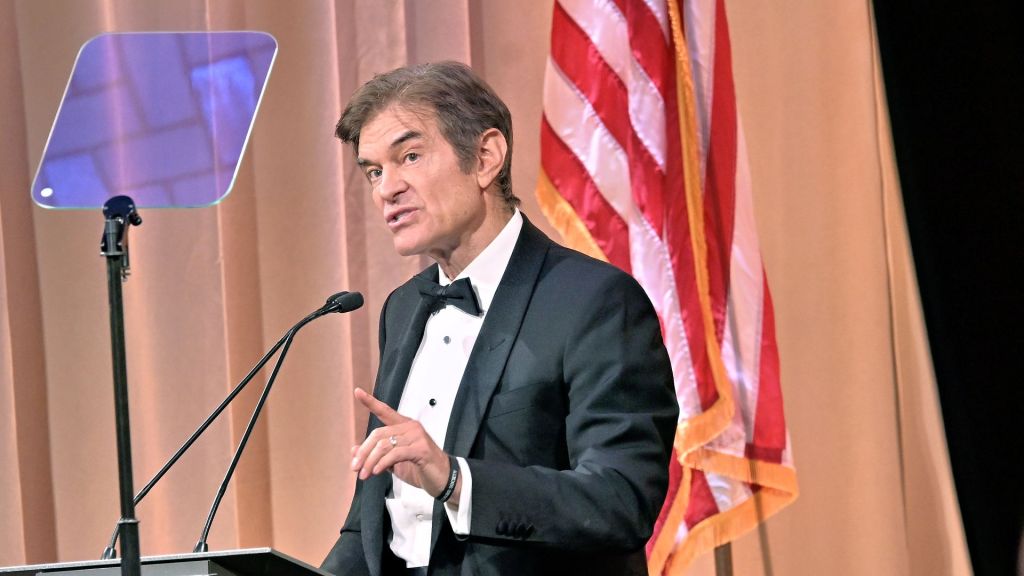
SIMONE DEL ROSARIO:
FOR THE FIRST TIME IN HISTORY – UNITED AUTO WORKERS ARE STRIKING AGAINST DETROIT’S BIG THREE AT THE SAME TIME: GM, FORD, AND FIAT CHRYSLER PARENT STELLANTIS. A 10-DAY STRIKE COULD COST THE U.S. $5.6 BILLION IN GDP, AND PUSH MICHIGAN INTO A RECESSION. YEP, STRIKES CAN STRAP COMPANIES, WORKERS AND THE ECONOMY AT LARGE. HERE ARE SOME OF THE MOST COSTLY STRIKES EVER IN THIS WEEK’S FIVE FOR FRIDAY.
THE YEAR’S 1997 AND UPS HAS ITS HAND IN DELIVERING 80% OF GROUND PACKAGES NATIONWIDE. THEN, 185,000 UPS WORKERS GO ON STRIKE FOR 15 DAYS OVER PENSIONS, WAGES, AND PART-TIME STATUS. THE STOPPAGE COST THE COMPANY AROUND $800 MILLION. AND IT’S HARD TO STATE THE OVERALL IMPACT SINCE USPS AND FEDEX COULDN’T FILL THE VOID. E-COMMERCE HAS EXPLODED SINCE THEN, WHEN UPS WORKERS WERE CONTEMPLATING ANOTHER STRIKE THIS SUMMER, JUST 10 DAYS WOULD HAVE COST THE U-S ECONOMY $7.1 BILLION.
THE MLB’S SEASON-ENDING STRIKE OF 1994 COST OWNERS AN ESTIMATED $580 MILLION AND PLAYERS $230 MILLION. IT ALSO PUT THE KIBOSH ON THE SHORT-LIVED “BASEBALL NETWORK” WHICH LOST $595 MILLION IN REVENUE AS THE LEAGUE CANCELED NEARLY 950 REGULAR SEASON GAMES ALONG WITH THE PLAYOFFS AND WORLD SERIES. AND THE SPAT OVER A SALARY CAP COST GOODWILL WITH FANS, IT TOOK MORE THAN A DECADE FOR ATTENDANCE TO COME BACK TO PRE-STRIKE LEVELS.
I REMEMBER THIS ONE WELL, YOU COULDN’T GROCERY SHOP WITHOUT CROSSING A PICKET LINE. IN FALL OF 2003, 70,000 SOUTHERN CALIFORNIA SUPERMARKET WORKERS WENT ON STRIKE. THE UNION SAID ALBERTSONS, VONS, PAVILIONS AND RALPH’S WERE TRYING TO REDUCE BENEFITS TO COMPETE WITH WALMART. THE 4 MONTH STRIKE COST THE CHAINS BETWEEN $1.5 AND $2 BILLION AND WORKERS LOST $300 MILLION IN WAGES. WHILE THE TWO SIDES EVENTUALLY CAME TO TERMS, RALPH’S ENDED UP SHELLING OUT $70 MILLION IN PENALTIES FOR ILLEGALLY HIRING LOCKED OUT WORKERS UNDER FAKE NAMES.
LAST TIME UNITED AUTO WORKERS WENT ON STRIKE, IT WAS A 40-DAY WALKOUT AGAINST GENERAL MOTORS IN 2019. 48,000 WORKERS WALKED OUT FOR BETTER WAGES AND JOB SECURITY. GM SAID THE STOPPAGE COST THEM $3.6 BILLION IN EARNINGS THAT YEAR, BUT THE AUTO INDUSTRY IS FAR REACHING AND COMPANIES DOWN THE SUPPLY CHAIN LOST BIG BUCKS. THE PRICE OF STEEL EVEN TOOK A DIVE AMID A LACK OF PRODUCTION WHILE 34 PLANTS IDLED.
HOLLYWOOD IS CURRENTLY AT A STANDSTILL WITH WRITERS AND ACTORS ON STRIKE SINCE MAY AND JULY. BOTH ARE CONCERNED ABOUT GETTING REPLACED BY AI AND COMPENSATION FOR STREAMING RIGHTS. TV AND MOVIES ARE A $134 BILLION BUSINESS, AND ANALYSTS SAY THIS STRIKE COULD COST THE ECONOMY MORE THAN $5 BILLION OR $150 MILLION A WEEK. THE COSTS WILL KEEP PILING UP AS THERE’S NO END IN SIGHT. REMEMBER THIS IS ABOUT BEHIND THE SCENES, EXTRAS AND BIT PLAYERS, NOT RYAN GOSLINGS AND MARGOT ROBBIES.
INTERESTED IN MORE HOLLYWOOD STRIKES IN HISTORY? WE’VE GOT A FIVE FOR FRIDAY FOR THAT. I’M SIMONE DEL ROSARIO. IT’S JUST BUSINESS.










